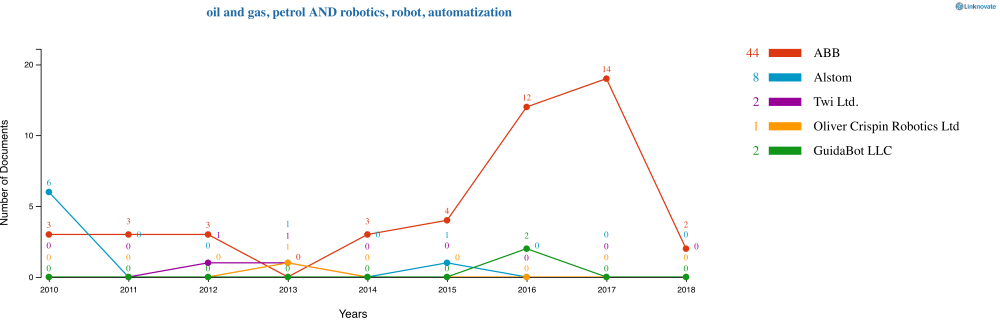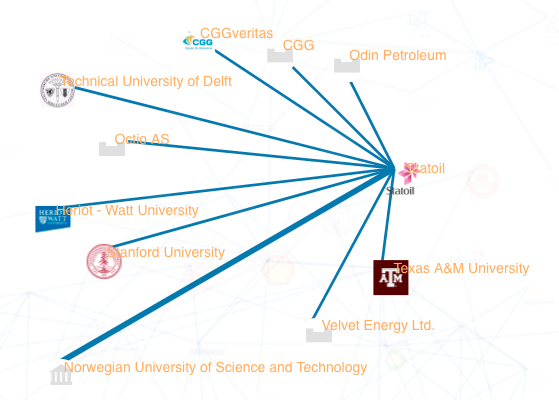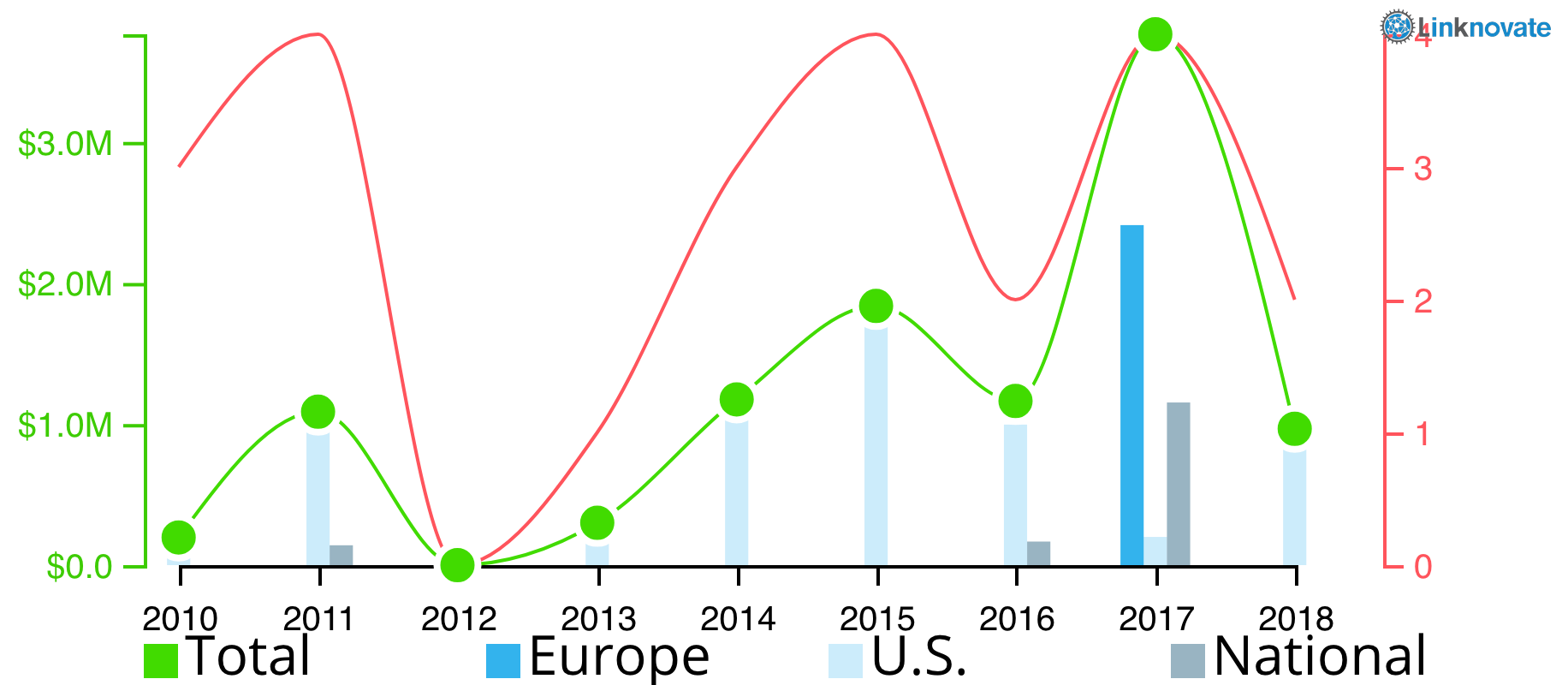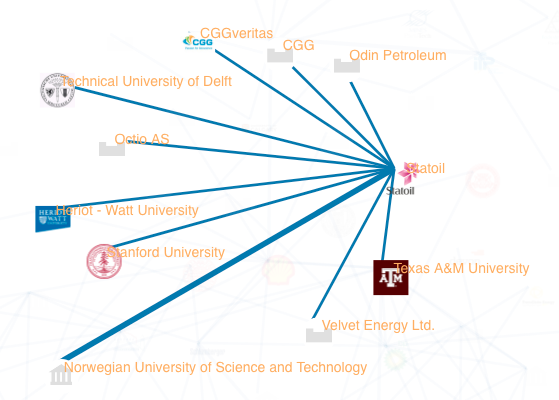Wearables, 4D Seismic Technology, or Robotics. Here are the five Oil and Gas trends that will shape up the future of the industry. Prepare for 2018 and the challenges to come.
The Oil and Gas Industry has survived some especially tough few years due to weak demand and low prices, and only now the sector is beginning to recover. Still, oil is and will remain the world’s most vital source of energy, at about 35% of all needs.
After a period when it’s been difficult to make strategic decisions and plan for the future, oil and gas corporations must catch up and focus on the expected demand increases from emerging economies such as Latin America and, most pressingly, China.
So if you are in the oil and gas industry, preparing for 2018 and beyond, you will find these oil and gas trends insightful for the challenges to come.

1.1. Robotics’ Trends for the Oil and Gas Industry
Robotics are likely to become more commonplace in the industry, handling complex and repetitive tasks such as connecting pipes and replacing broken machinery, which in turn will reduce labor requirements.
And as the chart below shows, robot use is big in Drill Pipes and Waste Water Disposal Pumps. But also, we can observe that, on the one hand, companies want to improve the way those robots ‘communicate’ and, on the other hand, they want to re-use Current Sensors and make them compatible with new technologies.

Source: Linknovate.com
1.2. Key Organizations using Robots for the Oil and Gas Industry
All the top 10 organizations worldwide working on the topic are private companies. However, they make up 76% of the total organizations.
Many of the top companies in the ranking (Innospection Germany, Quasset, Gassco, Dekra Industrial, Chevron, Oliver Crispin Robotics) received the same PETROBOT Grant, awarded by the European Commission for the development of two new robot inspection technologies for the oil, gas, and petrochemical markets.
Occupying the 18th position is General Electrics. They have announced an array of agreements with large and small oil companies to implement digital devices, databases, and sensors that could predict equipment breakdowns before they occur and expand exploration and production efficiency in deep sea and offshore oil platforms.
| Name | Score | Pubs. | Confs. | Grants | Patents | TMs | News | Web |
 |
49.7 | 1 | 8 | – | – | 5 | – | – |
 |
28.9 | – | – | 1 | – | – | – | – |
 |
25.4 | – | – | 2 | – | – | – | – |
 |
23.4 | – | – | 3 | – | – | – | – |
 |
21.6 | – | 1 | 1 | – | 6 | – | – |
 |
21.6 | 2 | 4 | – | – | – | – | 1 |
 |
18.1 | – | 1 | 1 | – | – | – | – |
 |
16.6 | – | 1 | 1 | – | – | – | – |
 |
16.6 | – | 1 | 1 | – | – | – | – |
 |
16.4 | – | 2 | 1 | – | – | – | – |
Top 10 Organizations Worldwide Using Robots for the Oil and Gas Industry. Source: Linknovate.com
NOTE: Since we are constantly updating our data, results may vary. Click on the link for more updated results.
1.3. Top 5 Corporations using Robots for the Oil and Gas Industry
Without a doubt, ABB is the leading corporation worldwide developing this technology. They are collaborating with the Texas State University and with Statoil to explore robotic applications in the offshore oil and gas industry.

Source: Linknovate.com
2.1. 4D Seismic Technology Maturity
Seismic technology is used by oil and gas researchers to map and interpret potential hydrocarbon reserves. But adding the time dimension, 4D seismic technology shows how a reservoir will change over time.
And that’s strategic information for oil and gas corporations, that are partnering with universities and research labs around the globe to boost the research.

Source: Linknovate.com
2.2. Key Companies in 4D Seismic Technology
The expense of exploration in deep waters and the value of residual oil in existing fields are among the drivers of seismic technology development. 4D seismic techniques are coming of age as a tool to minimize drilling risk and to maximize the return on investment.
Out of the top 10 organizations worldwide, four belong to the academia and six are companies. Three of them are French organizations (French Institute of Petroleum, CGG, and Total), two are Norwegian (Statoil and NTNU), and two are from the USA (Colorado School of Mines and Chevron).
Their research revolves around mapping water and gas injection areas through 4D seismic technologies. For example, Total is doing extensive research in Africa to understand the data and improve the process.
| Name | Score | Pubs. | Confs. | Grants | Patents | TMs | News | Web |
 |
39.5 | 10 | 10 | – | 1 | – | – | – |
 |
32.6 | 10 | 4 | – | – | – | – | – |
 |
22.8 | 10 | 5 | – | – | – | – | – |
 |
21.4 | 5 | 14 | – | – | – | – | – |
 |
15.6 | 4 | 2 | – | – | – | – | – |
 |
14.1 | 2 | 3 | – | – | – | – | – |
 |
11.6 | 8 | 8 | – | – | – | – | – |
 |
10.5 | 2 | 4 | – | – | – | – | – |
 |
9.7 | – | 9 | – | – | – | – | – |
 |
9.0 | 3 | 4 | – | – | – | – | – |
Top 10 Organizations Worldwide Using 4D Seismic Technology for the Oil and Gas Industry. Source: Linknovate.com
NOTE: Since we are constantly updating our data, results may vary. Click on the link for more updated results.
2.3. Companies’ Collaborations: Statoil
One of the most impressive Linknovate’s tools is the Organization Social Graph, which propels to discover hidden collaborations between organizations. Using the tool we’ve detected companies that act as ‘collaboration poles’, like Statoil in the graph below, but also Total, Chevron, or BP to name a few.

Source: Linknovate.com
3.1. Oil and Gas Mobility Trends
The increasing global order for fuel is making it difficult for companies to regulate the supply of oil and gas over the globe. And since this process involves complex data, many oil companies are transforming their traditional practices into a mobile performance-powered approach, which acts as a key driver for the oil and gas mobility market growth.
However, optimum utilization of resources such as human, technology, processes and financial data is the critical challenge for oil and gas mobility.

Source: Linknovate.com
3.2. Key Organizations in Oil and Gas Mobility
Out of the top 10 organizations worldwide innovating in oil and gas mobility, five belong to the Academia and five are enterprises. However, corporations and SMEs make up 60% of the overall entities.
Oil and gas corporations like Shell or Saudi Aramco are approaching tech giants such as Microsoft, IBM, or Hewlett Packard to improve mobility.
| Name | Score | Pubs. | Confs. | Grants | Patents | TMs | News | Web |
 |
104.3 | – | – | – | – | – | 9 | – |
 |
96.0 | 41 | 63 | – | – | – | 1 | – |
 |
92.8 | 24 | 33 | 1 | 2 | 1 | 7 | 1 |
 |
62.2 | 1 | 1 | – | – | – | 12 | – |
 |
62.0 | 37 | 17 | – | – | – | – | – |
 |
57.1 | 28 | 11 | – | – | – | – | – |
 |
55.8 | 29 | 21 | – | – | – | – | – |
 |
52.4 | 31 | 25 | – | – | – | – | – |
 |
51.7 | 10 | 50 | – | 5 | – | 6 | – |
 |
49.4 | – | – | – | – | – | 5 | – |
Top 10 Organizations Worldwide Innovating in Oil and Gas Mobility. Source: Linknovate.com
NOTE: Since we are constantly updating our data, results may vary. Click on the link for more updated results.
3.3. Top Countries Innovating in Oil and Gas Mobility
By geography, North America is the largest oil and gas mobility market. However, Europe (France, the UK, and Germany) and Asia-Pacific (China, India, and Japan) are expected to grow significantly during the next years.

Source: Linknovate.com
4.1. Cloud Computing for Oil and Gas Trends
Oil and gas companies need immediate access to real-time information from oil fields and drilling platforms. This way, workers can collaborate and analyze the data to make informed, quick-production decisions. At the same time, information about the company’s exploration, development, and production is highly sensitive and classified, so security is a giant concern.
Two challenges for which Secure Cloud Computing is a solution. Cloud Computing provides seamless availability of data across organizations and enables cost-efficiency, scalable computing power on demand.

Source: Linkovate.com
4.2. Key Companies using Secure Cloud Computing for the Oil and Gas Industry
Once in the cloud, those in a company can collaborate in real time anywhere the globe, adjust to larger workloads, or accommodate downturns; all of which increases productivity… and revenue.
This is a technology that is already on the market, although oil and gas corporations are still getting used to implement it. That is why they are collaborating with technology providers like Microsoft, Rolta, or ABB. Leading oil and gas companies already using secure cloud computing are Americans Schlumberger and General Electric.
| Name | Score | Pubs. | Confs. | Grants | Patents | TMs | News | Web |
 |
326.1 | 1 | 1 | – | – | – | 19 | – |
 |
39.7 | – | – | – | – | 7 | 5 | – |
 |
32.0 | – | – | – | – | – | 6 | – |
 |
29.6 | – | – | – | – | – | 11 | – |
 |
29.6 | – | – | – | – | – | 5 | – |
 |
29.5 | – | – | – | – | – | 2 | – |
 |
29.2 | – | – | – | – | 6 | 7 | – |
 |
26.6 | – | – | – | – | – | 1 | – |
 |
23.0 | – | – | – | – | – | 3 | – |
 |
20.4 | – | – | – | – | 2 | 6 | – |
Top 10 Organizations Worldwide Applying Secure Cloud Computing in the Oil and Gas Industry. Source: Linknovate.com
NOTE: Since we are constantly updating our data, results may vary. Click on the link for more updated results.
4.3. Grants in Secure Cloud Computing for the Oil and Gas Industry
Since 2010, there’s been a total of $ 5.75M of public funding granted to 17 projects for applying Secure Cloud Computing to the oil and gas industry.
Duke University was the organization that received the largest amount of money: almost $1M to develop a service system to monitor and manage oil and gas leaks.

Source: Linknovate.com
5.1. Wearables for the Oil and Gas Industry Evolution
Wearable technology has a huge potential to improve performance and reduce the risk of personnel maintaining assets in hazardous environments.
When looking at the aggregated set of records Linknovate has collected for Wearables for the Oil and Gas Industry, the general trend looks like the sector is steadily growing.

Source: Linknovate.com
5.2. Key Companies Innovating in Wearables for the Oil and Gas Industry
One key challenge of wearables in Oil and Gas is the need, in circumstances involving hazardous gases or liquids, for wearable devices to be intrinsically safe.
Big oil giants like Nippon Oil, Exxon, or BASF understand the potential of this technology and are placing themselves in a leading position for the future.
One company developing this type of wearables is Daqri. They have developed Smart Helmets and Glasses that can provide context-sensitive Augmented Reality and have the essential advantage of leaving the hands free from holding any device. The smart helmets and glasses can project an AR image of a sensor dial via IoT, without having to be physically near to the sensor to read it. All while supporting voice-activated commands.
| Name | Score | Pubs. | Confs. | Grants | Patents | TMs | News | Web |
 |
80.0 | – | 4 | – | 10 | – | – | – |
 |
49.4 | – | – | – | 7 | – | – | – |
 |
38.0 | 1 | 1 | – | 8 | – | 3 | – |
 |
33.8 | 1 | 2 | – | 4 | – | 2 | – |
 |
28.8 | – | – | – | 1 | – | 5 | – |
 |
27.3 | – | 1 | – | 4 | – | – | – |
 |
26.5 | – | 3 | – | 2 | – | 7 | – |
 |
24.2 | – | – | – | – | – | 3 | – |
 |
22.8 | 5 | 1 | – | 1 | – | – | – |
 |
21.4 | – | – | – | – | – | 1 | – |
Top 10 Organizations Worldwide Using Wearables for the Oil and Gas Industry. Source: Linknovate.com
NOTE: Since we are constantly updating our data, results may vary. Click on the link for more updated results.
5.3. Companies’ Collaborations: ENI SpA
Analyzing “hidden” data, such as companies’ R&D collaborations, we can see that one of the most active ones, and that is investing more money in innovation, is BASF. We can also find academic research carried out by Kings’ College or the Chinese University of Petroleum.
However, one of the companies that catch our attention is UK-based Shell. It’s interesting to observe how they are collaborating with fellow oil and gas but also chemical companies.

Source: Linknovate.com










